What are the current lighting systems, which they happen, how to calculate them and how to equip the system. Some secrets of light design.
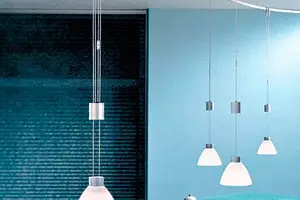
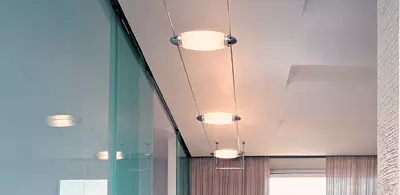

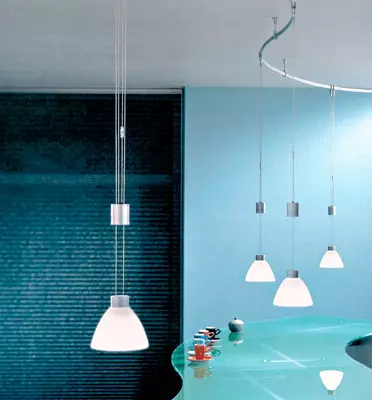
Flexible suspension allows you to adjust the height of the lamp and thereby illumination of the bar rack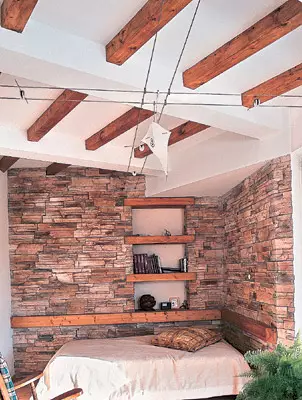
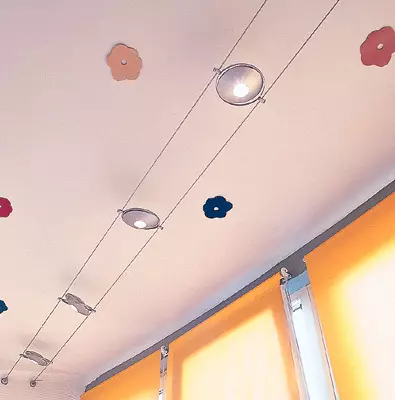

In order to avoid sagging, the string cable is tensioning with great effort. Because of this, such systems cannot be mounted between two plasterboard walls. Get out of the position helps fastening to the ceiling with two hard suspensions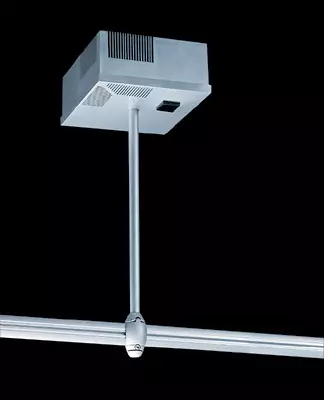
Suspension of the bus system performs simultaneously the power supply function from the downcast transformer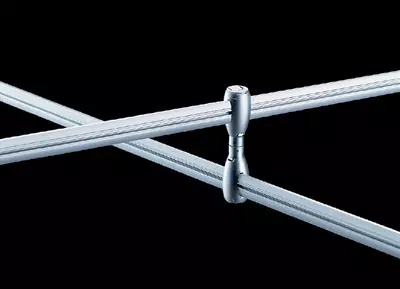
Schmitz Leuchten high-voltage system busbars from Schmitz Leuchten can crossed in different planes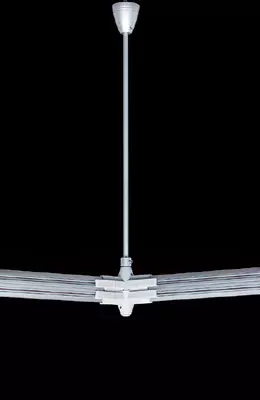
Flexible suspension combined with a connector (the inscription of rotation of segments from 90 to 270)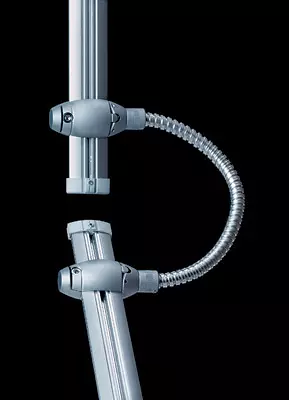
Separate current tires can be combined into a common chain using flexible connectors.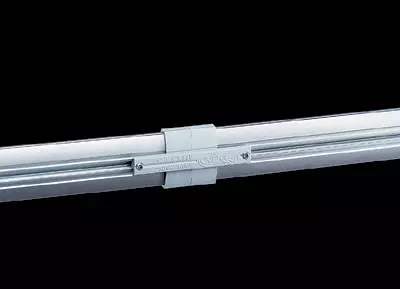
Plots of current wires can be shown using connecting elements connectors. They are both isolated and conducted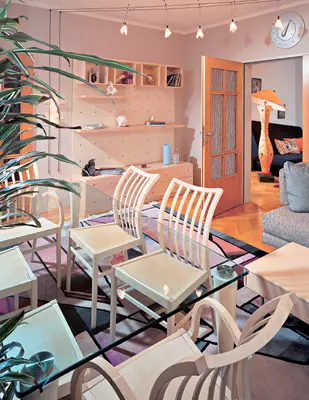
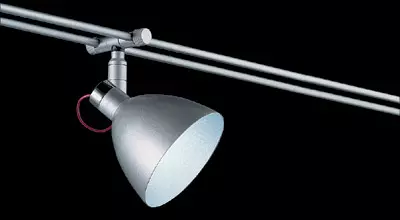
The two-tape system consists of a pair of thin metal tubes with a diameter of 4-10 mm, located at a distance of 3 to 20 cm.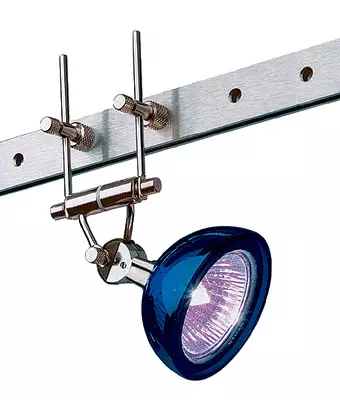
One of the varieties of bus-conductive tracks. Their advantage is obvious: the tracks are easily bent with their hands on any radius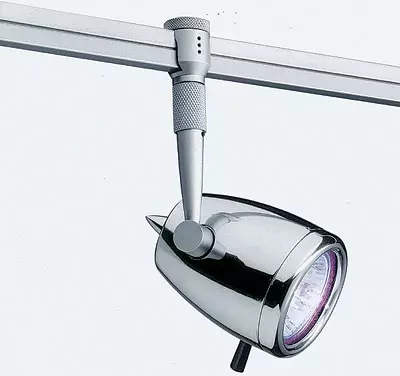
Luminaires are attached to the conductor with the help of unique adapters for each system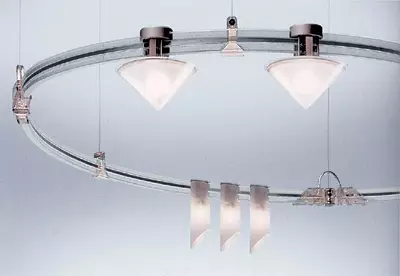
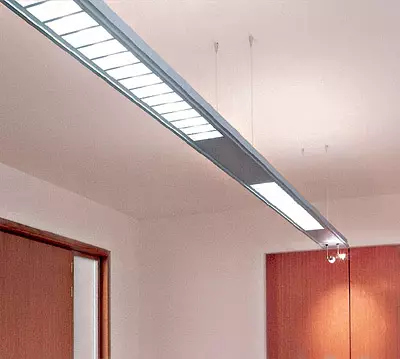
In modular systems, lamps of general and accented lighting, both high-voltage and low-voltage, can be used. Luminaires are selected based on the width and depth of the module profile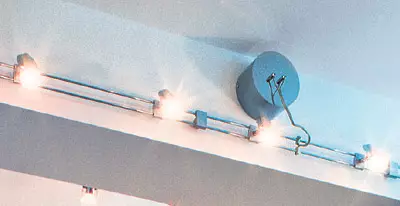
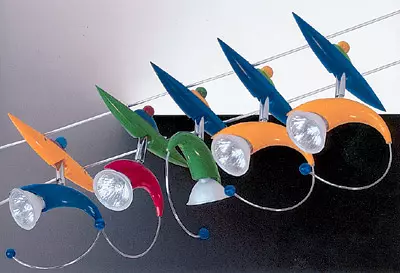
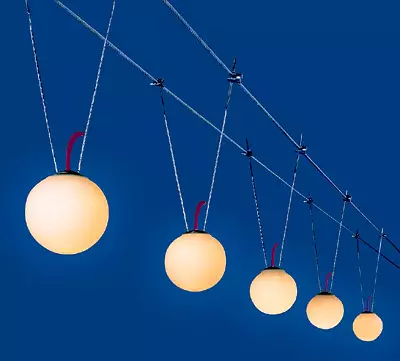
Of course, the main contribution to the system will bring the lamps themselves that can be performed by famous designers
The set of lighting systems presented in the market does not allow the buyer to easily make a choice. The absence of a single terminology is greater complexity, and it seems that the sellers of lighting equipment speak different languages. To help our readers navigate to the sea of market proposals, we decided to introduce the concept of current systems, based on the understanding of the design of the lighting systems.
The current lighting system is an ordered set of unique components inherent only to it (conductor, conductor suspension devices and luminaires, various docking and terminal elements, transformer), where the conductor is a carrier element that lamps can be mounted at any point. The currents have a different design and the degree of rigidity, are open or isolated. There are two types of conductive systems for residential interior: string (cable) and busbar.
The current systems fully prove that the lighting decorator tool, as well as building materials, and the popularity of these systems is steadily growing. If several years ago, they could be seen only in the exhibition halls, modern offices and shopping halls, today this version of the lighting was completely accustomed in the private interior. An express analysis of design projects published on the pages of our magazine shows that the current systems are most often used simultaneously with the central lamp as an additional or local lighting. But in fact, systems are universal - they are suitable for both common, and for accented lighting of space. Moreover, sources suspended on the conductor can easily be rearranged by changing accents. On the site of the bored lamps, if you wish, others from the system of the same series will appear. It is convenient that the currents can be mounted in any room, regardless of the ceiling height. In addition, they are able to intersect in any directions and change the direction along the radius (for brings) or under an acute angle (for trunks).
From 12 to 220 V
All current systems are divided into low-voltage and high-voltage. For the first case, an alternating current with a lowering transformer-voltage 12 and rarely 24B (the last variant of widespread dissemination did not receive due to the deficiency of the corresponding light sources). Sources of light in low-voltage systems are relatively inexpensive ($ 1.7-5) and 12-volt halogen lights are widespread on sale. However, they are sensitive to voltage drops that can significantly reduce their service life. Low-voltage systems are safe for humans, so they are used as in the "adult" rooms (in the kitchens, in living rooms, hallways, etc.) and in children's. Lamps for children's rooms are supplied with very cute multicolored lampshairs. Also, low-voltage systems are used to illuminate mirrors, bookshelf, paintings and photographs. Such systems are made by several dozens of foreign companies. The most famous products of firms from Germany are most well known (Paulmann, Schmitz Leuchten, Oligo, Ingo Maurer, Bruck, Brilliant, Bankamp), from Italy (Targetti, Nuova Mizar, Artemide, MetalSpot) and from Austria (Planlicht).For high-voltage models, the lowering transformer is not required to the conductor, the network voltage is 220V. The choice of types of light sources for such systems is much wider. Here apply lamps with halogen (220V), fluorescent lamps and incandescent lamps. If you wish or need, you can use even powerful metal halide lamps, which a few years ago made a real revolution in highlighting the interiors of the stores. The leading providers of high-voltage conductive systems to the Russian market are Schmitz Leuchten, Bruck, Bankamp, MetalSpot, Planlicht.
High-voltage lighting systems are recommended to use in rooms with high ceiling (2.7 m) so as not to touch the wires with their hands. However, the currents and all the docking elements are provided with insulation and electrical extensive.
Current systems have limitations on current strength. Downtooth systems The maximum permissible value of the current force is usually equal to 25a (respectively, the power of 300W), in high-voltage-15a (plain case, the electrical power is large, about 3.5 kW). If it is necessary to install lamps, the total power of which is higher than the maximum (for example, the low-voltage system is enough for food only eight 35-watt halogen lamps), then the system is divided into a series of segments from each other (ministers), docked using insulating connectors, and connect each Plot to a separate transformer. If the inverse problem of the transformer is set to power the luminaires located on several sections of the conductor, the conductive connectors apply. Connectors are understood by the individual connective elements for the conductor for the conductor, allowing to obtain a single system in design. They can carry a mechanical load and or isolate electrical chains, or to combine, becoming insulating or connected.
Practical advice
The main requirements for the installation of the lighting system, as well as the installation of all electrical products, are electrical safety requirements. Neglect of them can entail the most serious consequences. Non-profesionalism is particularly dangerous when working with a high-voltage lighting system. Be sure to invite installers to themselves. Boxed low-voltage systems also require careful circulation.
Before connecting the transformer, you must de-energize the input network, and after the connection, check the voltage voltage on the conductor. The tribal of high-voltage voltage should not be, that is, the voltmeter should show the voltage not more than 12V. The voltage is 12V safely, so it is possible to adjust the location of the lamps, you can change the bulbs without shutting down the system from the network.
The requirements of aesthetics, of course, are not so absolute as the security requirements, but the hurry and inaccurability will not give you subsequently to fully enjoy the design of the acquired lighting system.
Those times have long passed when the buyer "chasing" behind beautiful lamps, practically not thinking about the adequacy of the coverage of the lighting. If in high-voltage systems, the adjustment of the light stream is performed easily (it is enough to screw the light bulb of greater power), then for low-voltage conductive systems, a detailed calculation is absolutely necessary. It is necessary to accurately select the power of the transformer, the type of dimmer, the number and location of the lamps, their power. The correct calculation of the system will produce a light engineering company supplier. This is not a trivial task, since each lamp has its own light curve (distribution of the light flux) and creates illumination at a certain distance. It is measured in suites and is the main input parameter when calculating (AVSE is not the power of light sources, expressed in more familiar watts for us).
In practice, it is still possible to make an indicative calculation independently. For example, in low ceilings (2.5-2.7 m) for general lighting, there are enough lamps with a total capacity of 10 to 15W to 1M2. If the ceilings are high or increase the total power of the lamps, or the lighting system is installed at a low height.
Fantasize with design. For example, experts do not advise to install the lighting system along the middle line of the narrow room, the room seems even already. Show the system to one of the sides. There are several techniques that we will tell below.
Finally, you need to carefully schedule the places of mounting the suspensions to the ceiling (especially in the case of a bus system) and the point of fixing the wired system to the wall. The error will cost expensive, it will have to close the holes in the walls and the ceiling and drill new, not to mention how much effort will go to the achievement of the ideal - the slightest shortcomings will hurt the soul of the owner.
String systems
In stringed systems, the electric current flows on the stretched rope. Woven from thin copper or aluminum wires with a diameter of 0.1 mm, they are ordinary electrical products. For low-voltage systems, thin cables are used, commonly called strings. Often they do not have isolation.In high-voltage lighting systems, due to greater power (for the sake of electrical safety) and the high weight of the lamps, thicker and insulated cables are used. Their disadvantage is that in the place of installation of the lamps, the insulation has to cut or pierce, and in the case of moving the luminaires on the cable, the previous places of their attachment are visible.
As a rule, two parallel cables separated by 3-20 cm are used in stringed systems. One of the nichrome conductor, another phase. Luminaires are attached either on flexible suspensions, or are located between the cables in the same plane. The exclusion is MetalSpot Zen, which use dual insulated cables resembling wiring. Thus, if two such cables are used in the system, you will be able to create two separate chains of the lamps. Single Lighting can be done muffled, and to create an atmosphere to celebrate all the lamps.
The Album factory orbita string system is also an exception to the general rule. Two current conductive strings can be separated to a distance of up to 5m from each other and fastened along opposite walls. Luminaires of the system have long suspensions and can be placed anywhere in the room. Light adjustment is performed using the remote control.
All current systems can be installed horizontally, obliquely or vertically if lamps allow. Cables to avoid savings are tensioning with great effort. So it is not recommended to mount the string system between two plasterboard walls. In this case, you need to either apply long anchor bolts for fastening to the main wall, or use the installation on the ceiling with the help of two rigid racks through which it is stretched and then attached to the ceiling or semi cable.
The cost of the cable system is entirely determined by the value of the lamps and the transformer. One copper cable meter costs the buyer at about $ 2. Several dozen firms are employed by the production of string systems. You can purchase lighting systems from Paulmann, Bruck, Oligo, Schmitz Leuchten, Ingo Maurer, Nuova Mizar, MetalSpot, Belux, Planlicht, Cininils and others.
Shine systems
Unlike strings of lighting systems, which serve metal cables, in all other conduction systems are unique in each particular case. Variations are many, and it causes confusion in the names. The new name does not come up with the lazy. They are called tires, toels, modules and tracks. But what is interesting, unified terminology does not exist abroad. Thus, in Germany, all currents, except for cables, are called Schienen (tires), and in the English version of catalogs - Tracks (tracks). The number of terms is extended, which allows some classification.
Conductors made of extruded aluminum profile with copper conductor integrated into it, Americans are called tracks. Systems with shocking systems "sandwich" designs in which two conductor layers are separated by a dielectric layer, called Monoraail Systems, that is, with single rail systems. Widespread systems on thin metal tubes US sellers refer to TwinRail Systems - they are called rails.
Since the conductor based on the aluminum profile in domestic terminology is called busbars (or simply tires), the borrowed word "track" turned out to be free. Ipostaeers of lighting systems enjoy them completely freely, more often calling monorail conduction tracks. Let's try to give more accurate names to these systems, based on American terminology, which seemed to us the most developed and reasonable.
A single moment for these designs is rigidity. That is, these currents retain the specified form and do not require tension. For simplicity, we will continue to name them with busbars (or tires) and divide on rail and track busbar systems.
With all the manifold, they are equally attached to the ceiling and walls. Busbars can be suspended both to the main and decorative ceiling, because on average one meter of construction together with the lamp weighs no more than 3kg. The suspension is carried out using flexible cables or rigid rods with plastic or insulated brackets at the ends. The distance between the pendants varies from 50 to 150cm so as to ensure the stability of the system and prevent excessive load on the conductor and connectors. The surface of most busbar has a decorative coating - ranging from chrome or painting and ending with 14-carat gilding, because in the residential interior the system must also perform aesthetic functions. Downstream systems, where the current flows over the bare tires, the coating is made conducted by contact with adapters. Adapters are called brackets, with the help of which the lamps are attached to the busbar and get electrical energy.
Rail systems
All of them relate to low-voltage. This is due to the fact that the current flows on bare, uninsulated conductors, like "thresholds".In monorail systems, the shape of the cross section of the conductor may be the most diverse: round, ellipsy-shaped, square. The size of the low-voltage monoralic section is usually 6-10mm in width and 15-25mm in height. As a modification also produces tape busbars. This case between two thin conductive layers (no more than 1 mm thick) is also a thin layer of insulating material.
Rails can be curved as notifically - in the plane of the ceiling and perpendicular to it. Restrictions on the radius of bending, however, exist. As a rule, the minimum radius is 50cm, but it is worth clarifying for your system. With a smaller bend radius, a decorative tracking of the track is damaged, and in the worst case, the rail will even break. Ribbon monorails, due to the small thickness of the design, you can bend on the wide side with a smaller radius. The bending of the track is produced at the factory, in the supplier's workshop or directly in place. In the event, it will also be required to be a special bending mechanism provided for rent supplier, or, with small and tape sections, bending will be performed manually. The rail can be cut off the desired size right at the installation site, but the manufacturers advise it at the factory (due to the high probability of insulation and decorative coating). Most manufacturers produce monorails of several fixed lengths adopted on the basis of practical experience. For example, one of the leading companies in the lighting system market is Schmitz Leuchten- makes rails length 1 and 2m. This size is optimal for users, and in most cases systems can be easily assembled from segments of factory length.
In addition to the mentioned lighting systems from Schmitz Leuchten, METALSPOT, BRUCK, Oligo, Bankamp, Planlicht, Artemide, Zumtobel and others are offered on the Russian market.
In systems with two rails, the conductor serve fine copper tubes with a diameter of 4-10mm. Lamps are mounted as rigidly or flexible pendants. The system is assembled as monorails, of separate sections of the busbar docked with each other (they can be both straight and curved) and strengthened on rigid suspensions, which provide a given distance between zero and phase, to avoid short circuit. Such solutions offer manufacturers of Paulmann, Oligo, MetalSpot, Nuova Mizar, Planlicht, Luxol. The advantage of these systems is to combine the design of string and aesthetics of monorail systems.
Tracks
Distributed both low-voltage and high-voltage tracks. A pinch or aluminum profile will be filled with a couple of conductors with insulation so that they are "watching" inside the cross section of the profile, and it is almost impossible to speed up to the bare wire. Most of the plastic profile tracks bends with a minimal 1m radius. However, there is an exception, the high-voltage Breloner BL3000 system with a radius of bend 25cm. Any decorative coating can be applied to the surface of the tracks, of any color, if only it did not suffer when installing adapters of lamps. Aluminum profile tracks have a hard cross section and do not allow it to be flexible at the installation site. They can be knocked with the help of connectors from pre-bent busbar elements.
Often, several pairs of conductors with an insulator for various electrical circuits will be pressed into the profile. Thus, using only one track system, it is easy to ensure the flow of current to sockets, lamps and a computer. The main scope of application of stranded track systems - commercial premises: offices, shops, catering enterprises. If, in the design of the interior, a sufficient number of outlets was laid, it makes sense to apply a similar system. Strategic tracks are produced exclusively straightforward, so the systems collected from them look somewhat angular.
Two-housing track systems are supplied to Russia by the same companies that produce monorail busbars. Strategic modifications are released Iguzzini, Oligo, Nuova, Mizar and others.
An important role in creating the design of current-conducting lighting systems is played by auxiliary parts: suspension of currents and lamps, connecting and terminal elements of systems.
Connectors connectors are two types - insulating and conductive. The first serve to connect the insulated segments of the conductor, conductive ensure the flow of the current into its separate sections. Connectors are individual, apply only with single firms and almost never approach to systems from other manufacturers.
The easiest type of connectors is direct, but they are also released in the form of letters, t orx. These elements are joining the sections of the systems under a fixed angle in 60, 90 or 135. Connectors of developed ("advanced") lighting systems, such as Schmitz Leuchten, Oligo, Bruck, allow you to poison the tracks under an arbitrary angle (from90 to 2270). For other systems, if you need to change the angle in the plane of the ceiling or go to another level, flexible connectors are used with contacts at the ends.
Connectors T and X types for intersecting wires are available as insulating and connecting them into a common chain. ACS help Traverso connectors CONCETTO system (Schmitz Leuchten) You can create an intersection of several isolated current storage spaces.
Toppers are attached to the ceiling with special suspensions that are both flexible and hard. Typically, the length of harsh suspensions does not exceed 2m, the flexible cable suspensions sometimes reach 5m. You can choose the necessary length of the hard suspension made of thin metal tubes, from the row offered by the manufacturer of the lighting system. The main thing is that the lamps located on the conductor are not in the immediate vicinity of the ceiling. Often used halogen lamps in the process of work are heated, therefore should be located at a distance of at least 50 cm from combustible and thermal-resistant materials, that is, tension and some suspended ceilings. This distance can be achieved either by the remoteness of the conductor from the plane, or by elongating the suspension of the lamp. The inputs of the suspension are produced and power supplies from remote transformers hidden in a false plat. You can also acquire a transformer in a decorative housing with a suspension for a busbar. Luminaires are suspended to the conductor with the help of unique adapters for each system. For fastening, snap-in crab connectors or various threaded connections are used. The ends of the conductor are closed with decorative tips, made in a single style with the system. They mask the non-psychic cross-section of the conductor.
Each accessory of the customized lighting system, suspension, adapters, connectors, is purchased for a fee. The cost of one product is a few dollars. Mobility systems are all inclusive in advance and on the catalog you can choose even the development of currents with a certain angle of discrepancies.
Close relatives
The relative of the busbar lighting systems are modular systems. Their base is the profile box, which are hollow plastic housings with a cross section in the form of a parallelepiped, an ellipse or a circle. The profile width depends on the size of the mounted lamps and is from35 to 200mm. Profiles can be filled with each other at different angles. VM Module systems are installed both low-voltage and high-voltage lamps, and at the same time. In this case, wiring and transformers are hiding inside profiles. The whole system is either suspended to the ceiling on flexible cables, or embedded in the suspended structure.Modular systems are manufactured according to the designer specification at the factory, that is, they require a separate project. Delivery time can reach 30-90 days. The cost of one route meter of the system, depending on the lamps, is $ 300-1000. The Russian market presents modular systems for the production of Belgian companies Modular Lighting Instruments, WeverduCre and Italian Deltalight and Iguzzini.
For unusual current systems, it is worth attributed to Mini-Cove, Fastube and Linear Guidelite Targetti (Italy). It is track models for highlighting the niche, the perimeters of the pools, walls consist of a chain of durable xenon light bulbs with a power of 5W. The lighting tire can be cut to the desired length and is curved without the help of a special tool.
Transformers, dimmers and remote control
According to experts, the first step when calculating the required low-voltage conductive system is the selection of a lower transformer. It can be induction (winding) or electronic. Electronic transformers are significantly easier induction, but their power does not exceed 300W. Undoubted advantage of electronic models - network current conversion with a frequency of 50 Hz to high-frequency. This allows you to fully suppress the flickering light bulbs- increase the comfort of lighting. In addition, when using such transformers, the service life of low-voltage lamps increases roughly doubled from induction, electronic models reduce launchers. However, electronic transformers are not so durable as induction, although today and are protected from short circuit and voltage drops. Inconale, the main advantage of electronics - silentness. Due to the effect of changes in physical dimensions under the action of electric current, inductive windings are noisy. Which is more removable power, the louder.
The electronic transformer must be located as close as possible to the connection site, otherwise the loss of voltage in the conductors will be significant, and this poorly affects the stability of its operation. Many manufacturers regulate the distance 50cm from the conductor to the electronic transformer. If the transformer fails to hide behind the suspended ceiling, it is placed in a decorative casing. The supply of electricity from the transformer to the track system is carried out using special, often unique input devices system or pairs of suspensions, in which such an opportunity is implemented. The cable of electricity from the transformer is supplied directly to the current-carrying conductors.
The intensity of the light flow of the system is easily adjusted using dimmer devices that allow smoothly to change the brightness of any light sources, except for luminescent. It should be borne in mind that when overloading dimmers begin to make noise. The cacteredron transformer is suitable only electron dimmer, and to induction inductive.
Specialists advise to install dimmers and transformers, calculated on the power, which is 10-20% higher than the real power of the system, or, on the contrary, reduce the number of lamps.
Some manufacturers, such as MetalSpot, Schmitz Leuchten and others, are offered to equip the currently conductive systems with a remote control device. User using the remote control can choose one of the eight or even sixteen room lighting modes. Setting the modes is also made independently and without much difficulty. The only "but": the equipment of the system by remote control will cost you $ 300-400.
Schemes for sale
To the current systems, as well as all lighting devices, methods of mass and exclusive sales can be applied. A bright example of massive, so-called box systems is the products of the German company Paulmann. Its models are sold packaged in cardboard boxes with a transformer and a set of inexpensive halogen luminaires. The cost of systems from Paulmann is less than $ 300- is determined by the package and design. Invested in the box instruction gives a detailed system assembly script. Punching of the conductor uses cables or metal tubes-rails. The buyer may choose the lighting systems, various design and number of lamps, length, appearance of the conductor and the transformer casing.
Similar models offer Brilliantag, but they are rarely found in the market. Much more often in stores and construction markets for sale lamps, imitating current system systems. They consist of a curved rod with a length of 0.5-2m, in which installation sites 4-6 lamps with light bulbs are already provided. KSTENE or ceiling These lamps are attached at one point. Together, the fasteners are set by a decorative casing, which contains a transformer. The cost of such lamps is $ 80-250.
But if you want to have at home the design of more expressive outlines, we advise you to think about buying an exclusive exclusion with designer lamps. The exclusive current system consists of a plurality of elements, each of which has its own low price. The maximum "weight" in the total cost luminaires contribute. The price of one lamp for the exclusive system is $ 40-200. The result is obtained that one traveling meter of the track system will cost $ 250-700, and the meter of the modular system is to $ 1,000.
The delivery time of systems from the manufacturer is 60-90 days from the time of order. Most of the time "eats" transportation of equipment to Russia, and this is the main minus expensive systems. If you have a shortage of time and money, we advise you to take advantage of the finished offers. The same their diversity is so great that there is no need for an exclusive order.
We offer you nine techniques, with the help of which you can influence the visual perception of a separate room of the apartment as a whole.
- Save the proportions of the large room allow direct light lamps.
- Reflected or scattered light will increase the volume of space.
- Adjust the proportions of the room as a whole without rearranging the lamps can be changing the brightness of light reflected from the floor, walls and ceiling.
- To reduce the height of the ceiling, the light stream should be directed from the ceiling on the wall.
- To increase the height of the ceiling on the walls, lamps should be installed and send light on the ceiling, making it light before it.
- To expand the narrow room, the lighting system must be positioned along one of the walls on the level line.
- To narrow the wide room, the lamps are better located along the middle line of the ceiling.
- To reduce the length of the room, a chain of transverse lamps is used.
- For stretching space, a longitudinal chain of lamps is used.
